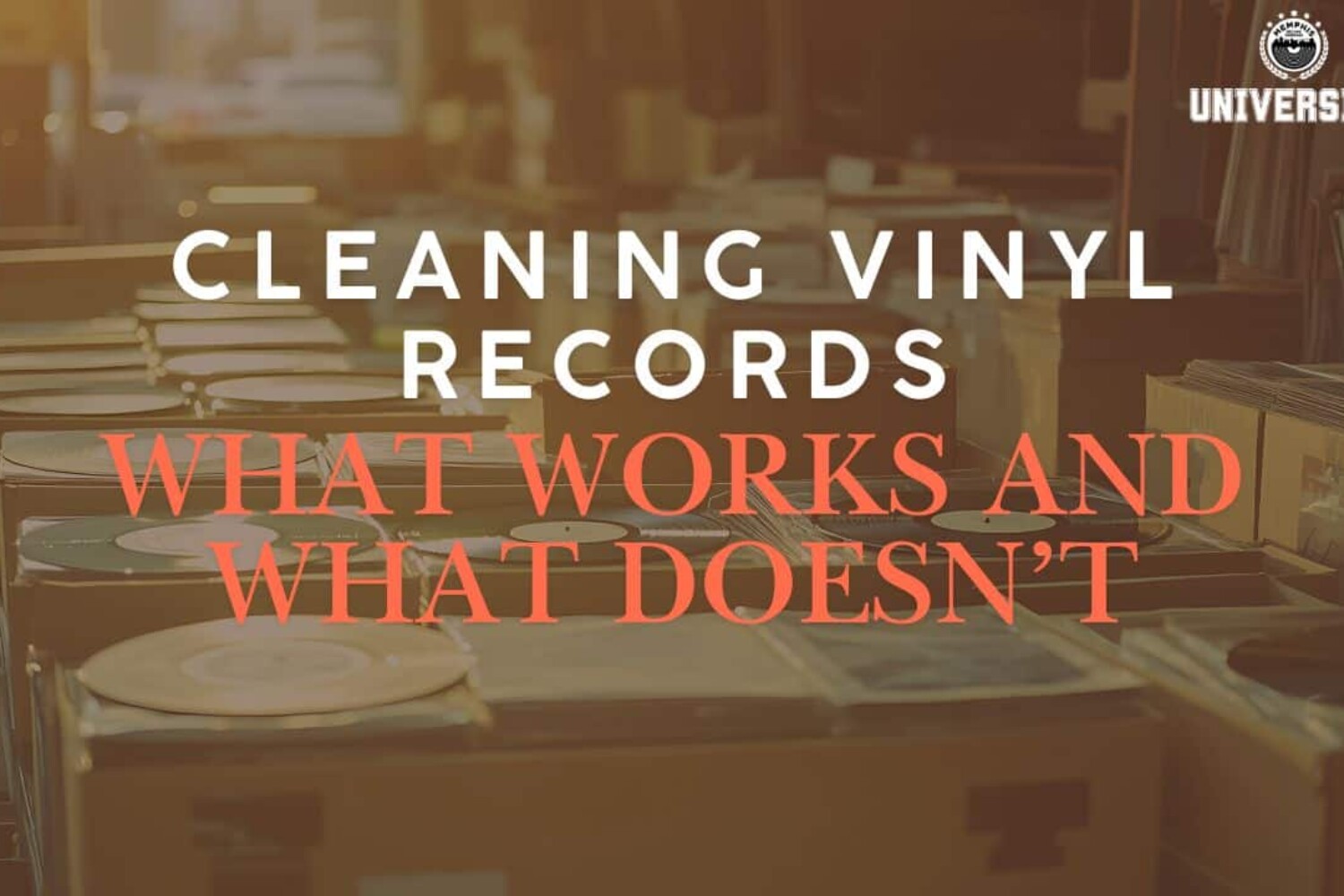Dirty records can turn a great listening experience into a crackly, distorted mess. But with so many cleaning methods and products out there, how do you know what actually works?
In this MRP University article, we break down the best (and worst) ways to clean vinyl records — from quick dust removal to deep cleaning. Whether you’re a beginner or seasoned collector, clean records are key to long-lasting playback.
1. Dry Cleaning: Carbon Fiber Brushes
A carbon fiber brush is a must-have for every vinyl lover.
Use it before and after each play to sweep away dust, lint, and static from the record’s surface. It’s quick, gentle, and prevents buildup in the grooves.
How to use:
– Spin the record on the platter
– Gently hold the brush across the grooves
– Slowly sweep toward the edge and lift off
2. Wet Cleaning: Vinyl-Safe Cleaning Solutions
For deeper cleaning, use a vinyl-safe cleaning fluid with a microfiber cloth or dedicated cleaning pad.
Avoid using tap water or alcohol-based cleaners, which can leave residue or damage the vinyl’s surface.
Recommended options:
– Distilled water + vinyl cleaning solution
– Commercial products like Audio-Technica, Spin-Clean, or GrooveWasher kits
3. Record Cleaning Machines (RCMs)
If you have a large collection or demand the cleanest playback possible, a Record Cleaning Machine (RCM) is the gold standard.
Types of RCMs:
– Manual vacuum RCMs (e.g., Record Doctor)
– Automated vacuum RCMs (e.g., VPI, Okki Nokki)
– Ultrasonic cleaners (e.g., Degritter, Kirmuss)
RCMs remove deep groove grime and static and often restore used records to near-mint playback quality.
What NOT to Use on Vinyl Records
Despite what you might see online, avoid these common but risky methods:
– Wood glue method: Risky and messy unless you know exactly what you’re doing
– Windex or household cleaners: Often contain ammonia or other chemicals that damage grooves
– Rubbing alcohol: Can dry out and degrade the vinyl compound over time
– Paper towels or t-shirts: These can scratch the surface and leave fibers behind
4. Stylus Maintenance Matters Too
Even a clean record can sound poor if your stylus is dirty. Use a stylus brush or gel pad to gently remove dust and debris. Clean the stylus after every few records to preserve detail and prevent groove wear.
MRP Tip
At Memphis Record Pressing, every test record we pull is cleaned and inspected before playback. A clean record reveals what the pressing really sounds like — and helps ensure every copy we send out meets our high standards.
Final Thoughts
Clean records aren’t just about aesthetics — they dramatically improve sound quality, reduce wear, and extend the life of your collection.
Whether you’re brushing off a favorite LP or deep-cleaning a thrift store find, the right tools make all the difference.
Spin smart. Stay clean. Keep learning with MRP University.

